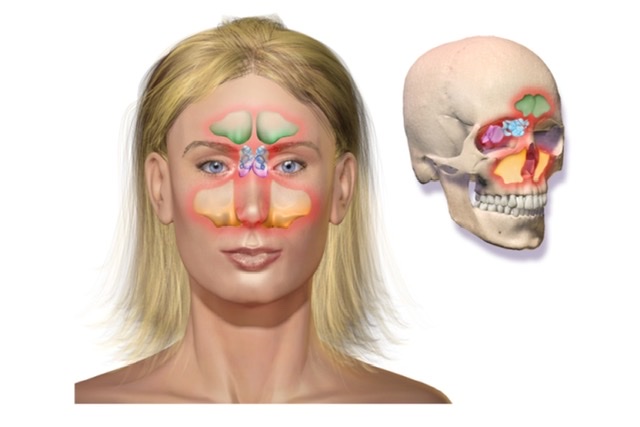
NOSE AND PARANASAL AIR SINUSES
Q.1 Name the structures forming the nasal cavity.
Roof:
From anterior to posterior
- Nasal part of frontal bone
- Nasal bone
- Nasal cartilages
- Cribriform plate of ethmoid
- Anterior surface of the body of the sphenoid bone.
Floor:
Palatine process of maxilla, Horizontal plate of palatine.
Q.2 Name the structures forming nasal septum.
Bones:
- Vomer
- Perpendicular plate of ethmoid
- Margins by nasal spine of frontal, rostrum of sphenoid and nasal, palatine and maxilla.
Cartilage:
Septal cartilage Inferior nasal cartilage.
Cuticular part:
Lower end, formed by skin.
Q.3 Which the main artery supplying mucous membrane of nose?
Sphenopalatine branch of the maxillary artery.
Q.4 What are the arteries forming the Little’s area?
It is the anteroinferior part of nasal septum containing anastomosis between: Superior labial branch of facial artery and sphenopalatine artery
Large capillary network.
Q.5 What is the clinical importance of Little’s area?
It is the commonest site of bleeding from the nose.
Q.6 Name the bones forming the lateral wall of the nose.
- Nasal
- Frontal process of maxilla
- Lacrimal
- Labyrinth of ethmoid with superior and middle conchae
- Inferior nasal conchae
- Perpendicular plate of palatine bone
- Medial pterygoid plate
Q.7 What are ‘nasal conchae’?
These are shelf-like bony projections from lateral wall of nose directed downwards and medially.
There 3 in number: Superior, middle, and inferior.
Q.8 Name the bones forming the ‘nasal conchae’.
Superior and middle conchae are formed by ethmoid bone while inferior concha is an independent bone.
Q.9 What are the meatuses of the nose?
These are the passages beneath the overhanging conchae.
Q.10 Name the paranasal air sinuses.
Frontal, Maxillary, Sphenoidal, and Ethmoidal.
Q.11 Name the openings in the middle meatus.
- Opening of frontal air sinus, through frontonasal duct above ethmoidal infundibulum.
- Opening of maxillary air sinus, in the lower part of hiatus semilunaris.
- Opening of middle ethmoidal air sinus, on bulla ethmoidalis.
- Opening of anterior ethmoidal air sinus, into ethmoidal infundibulum.
Q.12 Name the openings in superior meatus.
Opening of posterior ethmoidal air sinus.
Q.13 Name the openings in inferior meatus.
Nasolacrimal duct
Q.14 Where does sphenoidal air sinus open?
Sphenoethmoidal recess above the superior concha.
Q.15 What are the characteristic features of frontal sinus?
Frontal sinuses are contained in the frontal bone. These are separated from each other by a median bony septum and each is further broken up by incomplete septa. Each sinus drains into anterior part of middle nasal meatus.
Q.16 What is C.S.F. rhinorrhea?
A fracture of the frontal bone, tearing the dura and pia mater, causes communication between the nasal cavity and subarachnoid space and C.S.F., may trickle through nostril on the affected side.
Q.17 What is antrum of Highmore?
Maxillary sinus is also called as the antrum of Highmore.
Q.18 Why frontal sinusitis often leads to maxillary sinusitis?
Because secretions drainage out of frontal sinus flow towards the opening into the maxillary sinus.
Q.19 Why maxillary sinusitis is more likely to be chronic?
- Because the level of opening of maxillary sinus into the nose is placed at a higher level than the floor of the sinus so natural drainage is difficult.
- Sinuses open into the nasal cavity by narrow openings, so slight swelling of mucosa or thick secretions can block the outflow of secretions, that accumulate within the sinus.

Comments (0)